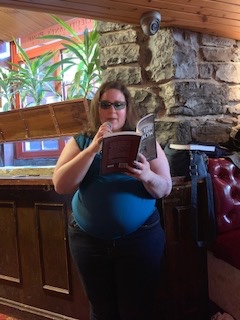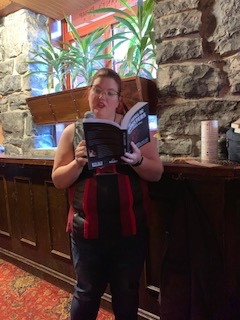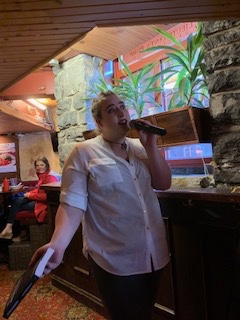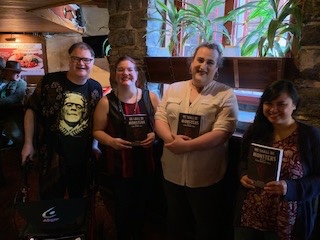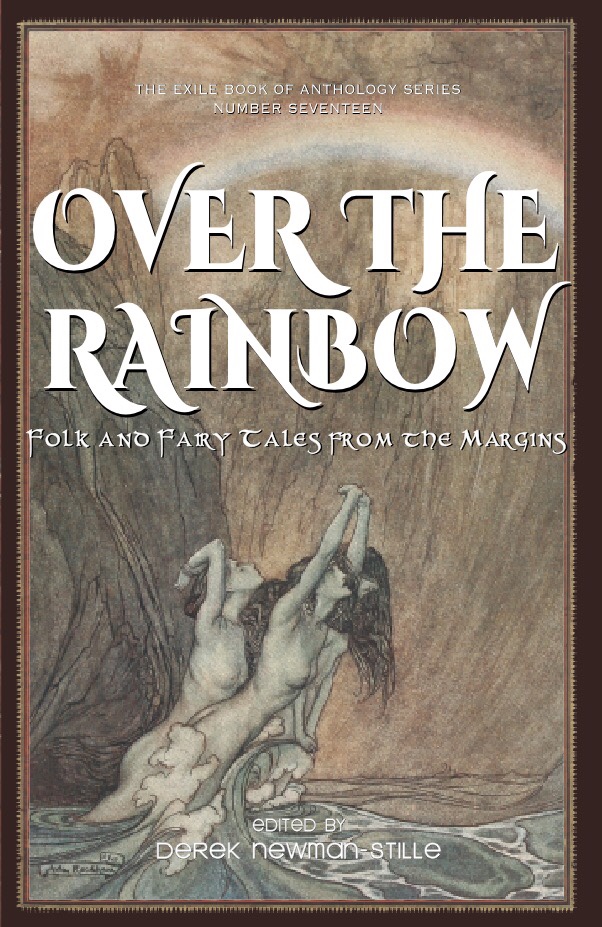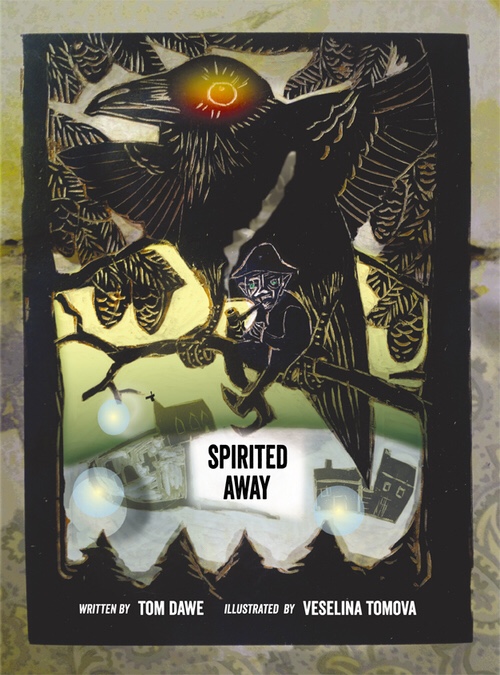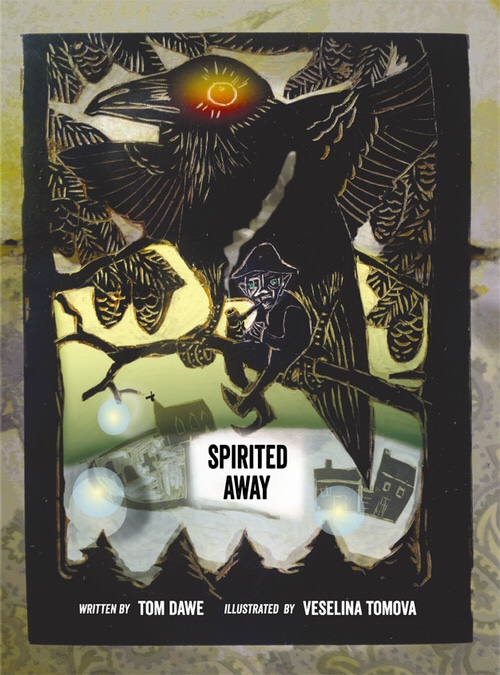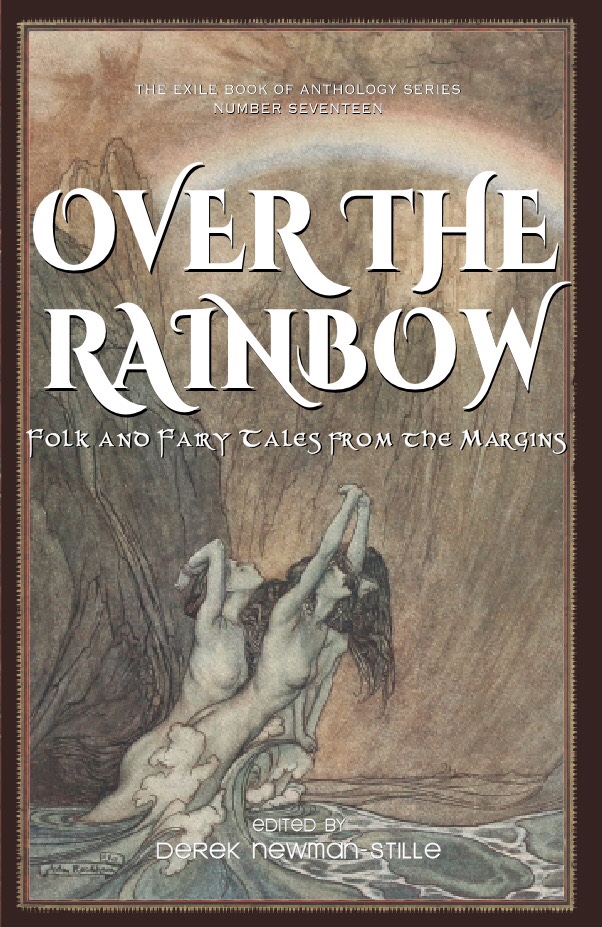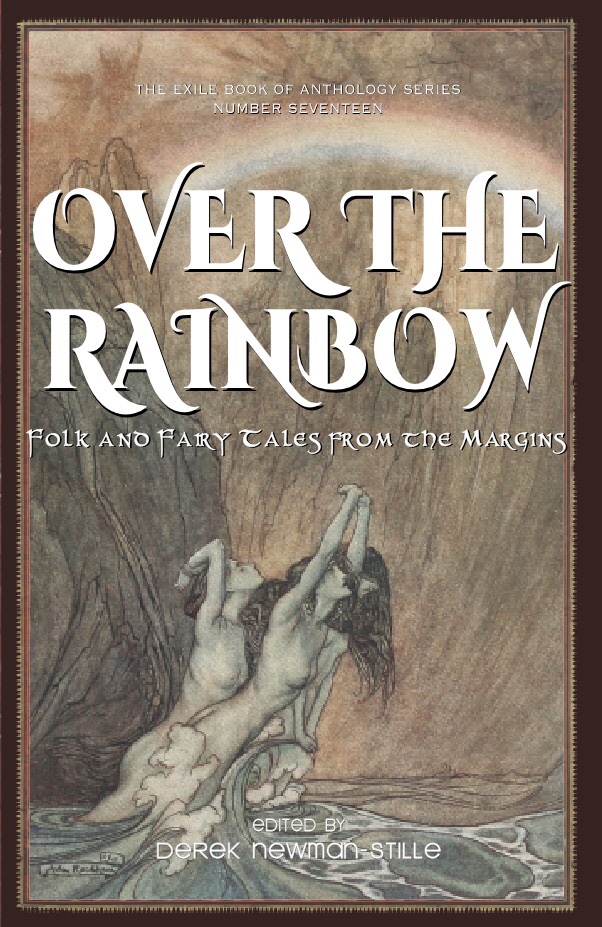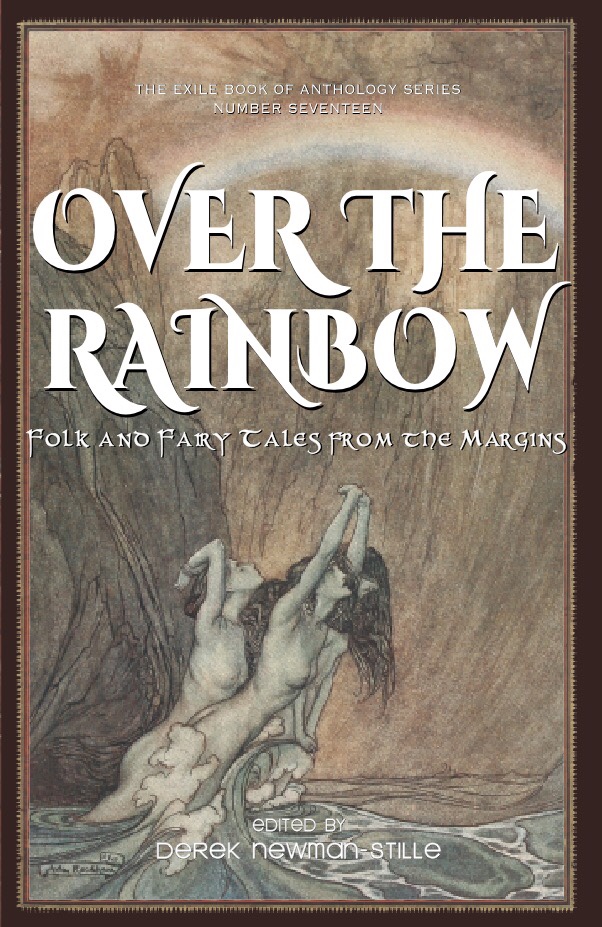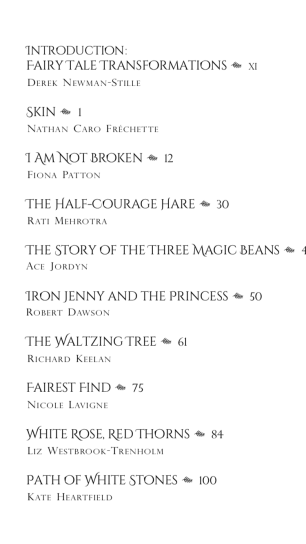Feeding the Imagination: Food in Fairy TalesBy Derek Newman-Stille
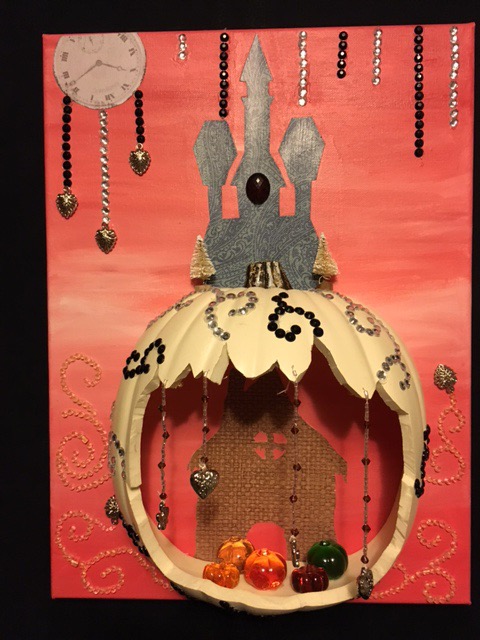
“Change Within and Without” by Derek Newman-Stille
Food provides an important role in fairy tales and food frequently had transformative powers. Food is something that links people together. It is something that human beings share – a need to eat. We link food to celebrations that mark the passages of time. Food is frequently linked to our expression of our ethnicity and our culture. Food can also be a means of establishing difference and foods are frequently used as a way of expressing discrimination – for example, calling Germans “Krauts”, The French “Frogs”. Food can be a marker of discriminatory difference and what we enjoy eating is culturally defined.
Tales about fairies frequently feature food, with the caveat of warning that when people enter into the fairy realm, they should never eat fairy food, no matter how appetizing it seems to be. Eating fairy food can forever force people to stay in the fairy realm. In this way, food is linked to space and place, with food becoming an anchor where it becomes literally a part of the body. There is an ingesting of part of the fairy realm that occurs and that realm becomes part of the human guest. Food has the power to change people.
Yet, it is also considered rude not to offer food. Fairy tales frequently centre around curses that have resulted from not offering a beggar food. Frequently powerful beings take the form of people in need of food in order to test the generosity of a hero. Food represents a bond between person who offers food and the person who receives it, linking them in social custom and tying them together through the notion of “the gift” and of the friendship between guest and host.
Food has a form of magic in fairy tales, a power to evoke changes. In “Cinderella”, food, in the form of a pumpkin, becomes a vessel of change, literally changing into a carriage to carry her to her new life. Cinderella enters into the body of the pumpkin, being swallowed by it in a reversal of the expected consumer-consumed relationship. It is part of her transformation and it is similarly a figure of change, converting to a pumpkin at midnight just as she transforms. It is a companion on her voyage to change.
Yet, many fairy tales feature the idea of food as a threat. They explore the power of food to potentially feed, but also to potentially kill. Snow White is a tale of an apple. The apple is so much a part of Snow that she has white skin like the inside of an apple and apple red lips. Yet the apple becomes a symbol of death rather than life, imbued with poison. Snow White is a tale of the ripening of youth and the experience of age. The apple given to Snow is, like the queen herself, all appearance. It is made to be beautiful to conceal a dark centre of poison.
And the apple, like the pumpkin is a fruit of transformation. The apple provides a gateway for Snow White into eternal sleep. It is a symbol of the complicated nature of food – both as something that can sustain life and also, through poison or disease, something that can take life away.
Jack in the Beanstalk is a tale of transformative beans. Jack, in hunger, exchanges one source of food (a cow) for another (three magic beans). Yet the beans provide the roots for a tale of transformation. They grow deep in the ground and up into the clouds, providing a geographic gateway for Jack into a different realm and a change of circumstances. The beans are rooted in place in Jack’s world, but their stalks provide movement to a different place. Jack is able to life in two spaces through the beanstalk’s ability to suspend itself, bridge-like, between these two places.
Hunger is something that frequently serves as motivation in fairy tales, propelling protagonists to change their circumstances in order to be fed. These tales or hunger likely reflect reality at the time the tales were written. Hansel and Gretel becomes a tale of displacement due to food. Unable to feed their children, Hansel and Gretel’s parents kick them out of the house. They attempt to use food (breadcrumbs) as a way to trace their way home, but these are eaten. When the two young people come across a house of candy, they believe they will be able to eat in abundance, but this tale inverts humanity and food, making the youths potential food for the witch and the witch’s candy as nothing more than a trap. In fact, the witch complicates the food/human dynamic when she is baked in the oven by Gretel just like food is.
Red RidingHood is similarly based on venturing with food and cannibalism. When Red wanders into the woods, it is to bring food to her ailing grandmother. However, this is another tale of cannibalism and, when RidingHood arrives, she is targeted as food by the wolf, who has already eaten Red’s grandmother and seeks to eat her.
Food and what has the potential to be considered food represents change. Perhaps this is because, so often we use food to represent passages of time, marking special occasions with it. The association between food and time is further enhanced when we look at ideas of ripening and rotting. Food has a limited window where it can be considered food – between ripening and rot. This is why the Cinderella tale is so fascinating – Cinderella travels within food, the pumpkin, and that food has a distinct expiry date – midnight.
Food changes over time and also changes us. In fairy tales, we really are what we eat… and we are what eats us as well.


